This post is Part I of a two-part series on my time spent in Athens, Greece. Part I covers my first day in Athens including cheese pies, the Acropolis, the Olympic stadium and more ruins!
Back in 2019, I had planned the most spectacular trip to Greece due to take place in April 2020. It had been a bucket list trip of mine for a long time as I spent a lot of time in college researching and reading ancient Greek history and mythology and so knew that someday I would one day walk the grounds of the ancients. I was a philosophy major after all.
Of course, things radically changed as a pandemic swept through the world. Like every other traveller during this time, my partner and I had to cancel our trip. We then went through all the lockdowns, vaccinations and social distancing rules… as we all know so well by now. Come January 2022, we felt like it had been a very long time since we had taken a vacation for, and with, just the two of us. Any trip throughout the height of the pandemic (when it was permitted) was to see family and loved ones. As Victor realised he had to take some unused annual leave prior to 1 April, we decided it was time to revisit our beloved planned trip to Greece. Once we booked everything, it really hit me: we’re finally going!
 Full disclosure, we had some serious bad luck at the start of our trip. Our taxi pick-up from the Athens airport went fine, but when our taxi driver dropped us off and drove away we realized he had dropped us off at the wrong hotel. It was very dark and cold, but we had to walk with our luggage through the tiny, cobbled sidewalks of Athens to get to our accommodation. Once at the hotel, we were exhausted but thrilled to be going to bed soon. However, further bad luck ensued when we heard loud, booming music around. We were on the first floor and a club was right below us. We had asked the hotel for a different room but they said the hotel was booked up for the night. Good things did come, but more on that later.
Full disclosure, we had some serious bad luck at the start of our trip. Our taxi pick-up from the Athens airport went fine, but when our taxi driver dropped us off and drove away we realized he had dropped us off at the wrong hotel. It was very dark and cold, but we had to walk with our luggage through the tiny, cobbled sidewalks of Athens to get to our accommodation. Once at the hotel, we were exhausted but thrilled to be going to bed soon. However, further bad luck ensued when we heard loud, booming music around. We were on the first floor and a club was right below us. We had asked the hotel for a different room but they said the hotel was booked up for the night. Good things did come, but more on that later.
Despite bad luck with the taxi and a bad night’s sleep, we managed to wake up early and go ahead with our day as planned. First up, breakfast! Having researched thoroughly before, I came to realise that pies are a major part of Greek cuisine. There are so many different types of pies, but a popular snack and breakfast version is the good ol’ cheese pie. It is basically made with filo, and its filling consists of feta, eggs, milk, yoghurt and olive oil. And so, we walked to a nearby pie shop (ΑΡΙΣΤΟΝ ΛΟΜΠΟΤΕΣΗ) to pick up some cheese pies. Across the street, we found a coffee shop and with that, we were energized for the day (P.S. the pies were amazing!).
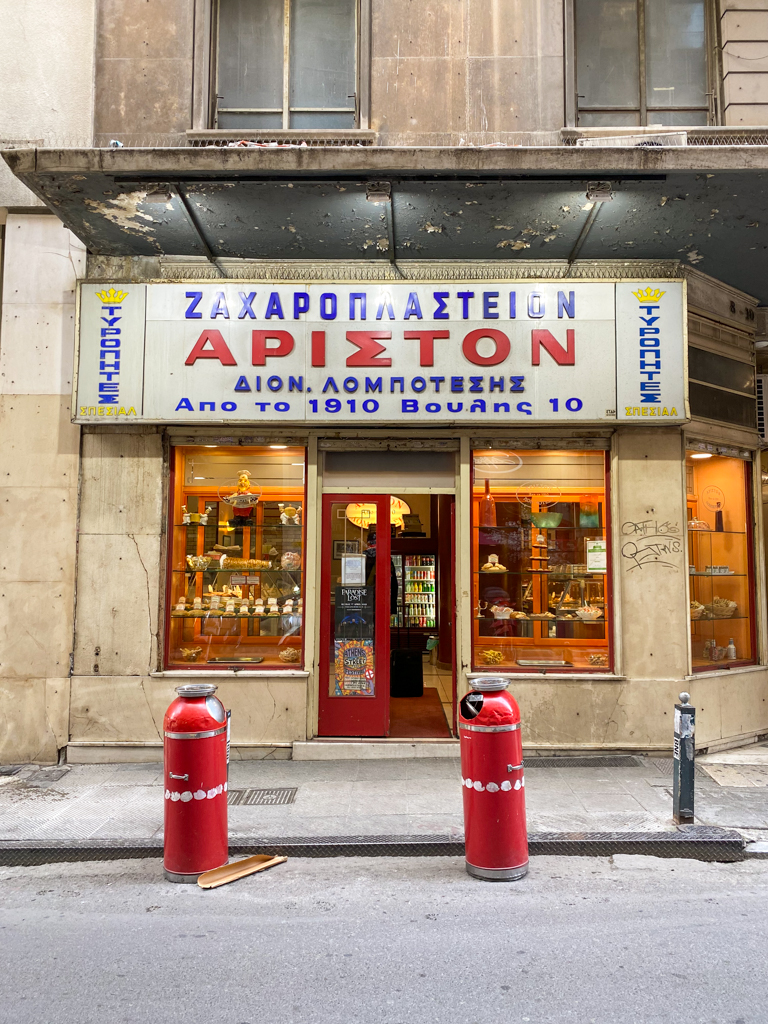

The Slopes of the Acropolis
We then walked to our first attraction of the day, the Acropolis. I had read all over online about how we should use the side entrance, and I can confirm it really is a good tip. There was hardly anyone and because we had bought our tickets ahead of time, we were past the entrance gate within seconds. In addition, arriving via the side entrance is really neat because you come across several ruins as you slowly climb up the hill.
 The first thing we learned about upon entering the Acropolis area was the Cult of Dionysus. The Sanctuary of Dionysus was located on the southern slope and encompassed the Theatre of Dionysus. While very few bits of the temples of the sanctuary remain, quite a lot of the theatre is still intact. The cult was specifically dedicated to Dionysus Eleuthereus (Dionysus the Liberator), being the god of winemaking, fertility, festivity, and theatre. The City Dionysia, or the Greater Dionysia, was a festival held each year in March to honour Dionysus Eleuthereus. The introduction of the City Dionysia in Athens most likely correlated with the rapid spread and popularity of the cult of Dionysus throughout the 6th century BCE.
The first thing we learned about upon entering the Acropolis area was the Cult of Dionysus. The Sanctuary of Dionysus was located on the southern slope and encompassed the Theatre of Dionysus. While very few bits of the temples of the sanctuary remain, quite a lot of the theatre is still intact. The cult was specifically dedicated to Dionysus Eleuthereus (Dionysus the Liberator), being the god of winemaking, fertility, festivity, and theatre. The City Dionysia, or the Greater Dionysia, was a festival held each year in March to honour Dionysus Eleuthereus. The introduction of the City Dionysia in Athens most likely correlated with the rapid spread and popularity of the cult of Dionysus throughout the 6th century BCE.
Many of the renowned Greek dramas we know of today were first performed at the Theatre of Dionysus as a part of the festival’s dramatic contest. The tragedies of Euripides, for example, Bacchae and Hippolytus, were performed here alongside comedies by Aristophanes, like Birds.
What is wisdom? Or what fairer gift from the gods in men’s eyes than to hold the hand of power over the head of one’s enemies? And ‘what is fair is always followed.’
– The Bacchae by Euripides
 Of course, the Acropolis and its slopes were used not only during Ancient Greek times but also in Ancient Roman times. Further along the path, we ran into the Odeon of Atticus. It’s a spectacular stone theatre that was completed in AD 161. It’s easy to miss if you go too high up the slope too quickly, so make sure we stay along the lower path to run into this marvel.
Of course, the Acropolis and its slopes were used not only during Ancient Greek times but also in Ancient Roman times. Further along the path, we ran into the Odeon of Atticus. It’s a spectacular stone theatre that was completed in AD 161. It’s easy to miss if you go too high up the slope too quickly, so make sure we stay along the lower path to run into this marvel.
 The Acropolis
The Acropolis
Once you’re at the top of the slopes, the first monumental work to greet you is the Propylaea, the ceremonial gateway to the Acropolis. It certainly is a fitting entrance with its grand hall and large columns.
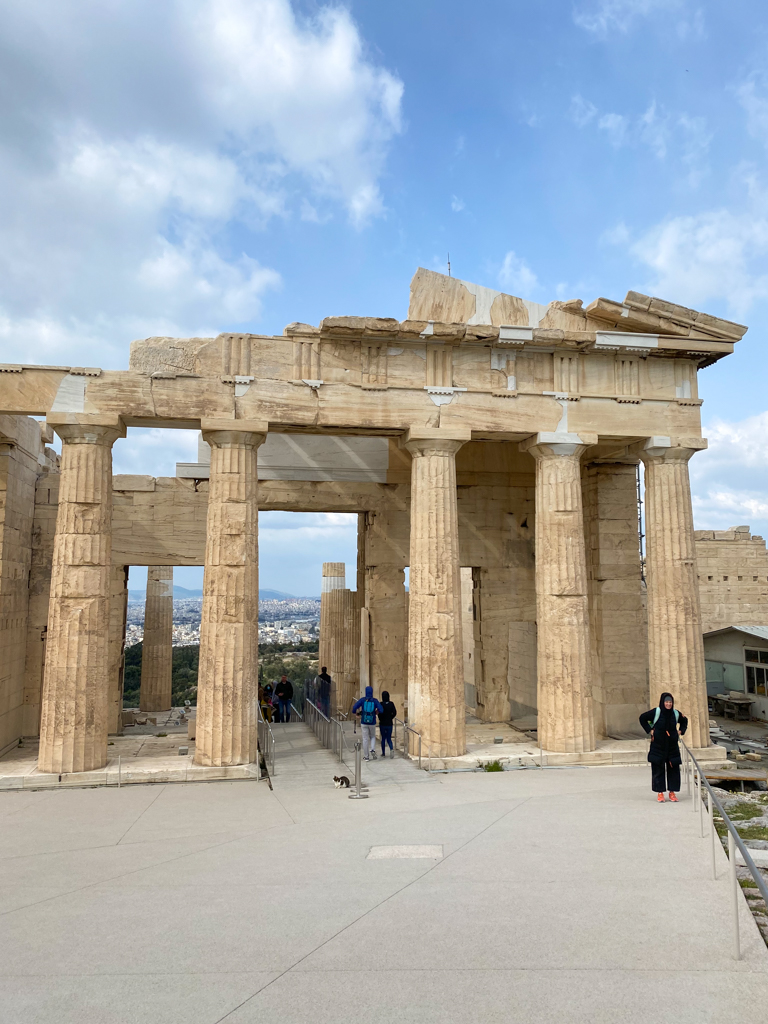
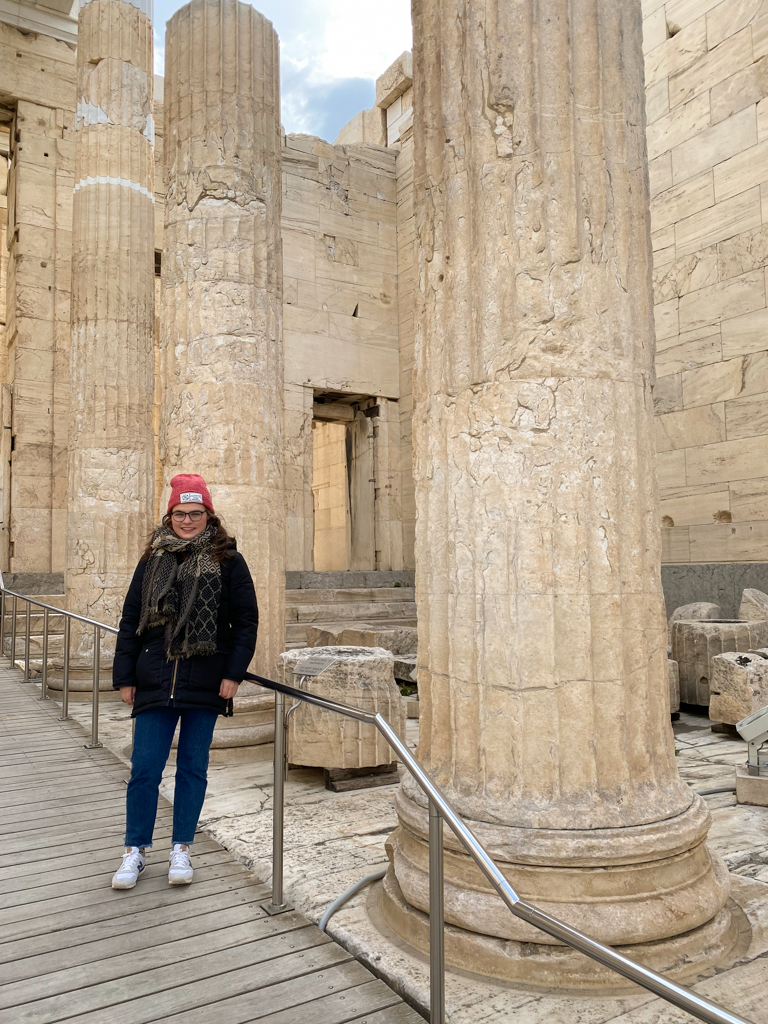
To the right of the Propylaea is the Temple of Athena Nike. We had already spotted the Temple as we were going up the slope. It’s a striking building. Built around 420 BCE, the temple is the earliest fully Ionic temple on the Acropolis. If you’re not familiar with the orders of classical architecture, here’s a quick rundown: orders are basically designs, and there are five major designs in classical architecture that can easily be recognised via the columns. These designs/orders include Doric, Ionic, Corinthian, Tuscan, and Composite. The Ionic order is characterised by the use of volutes, spiral, scroll-like ornaments.
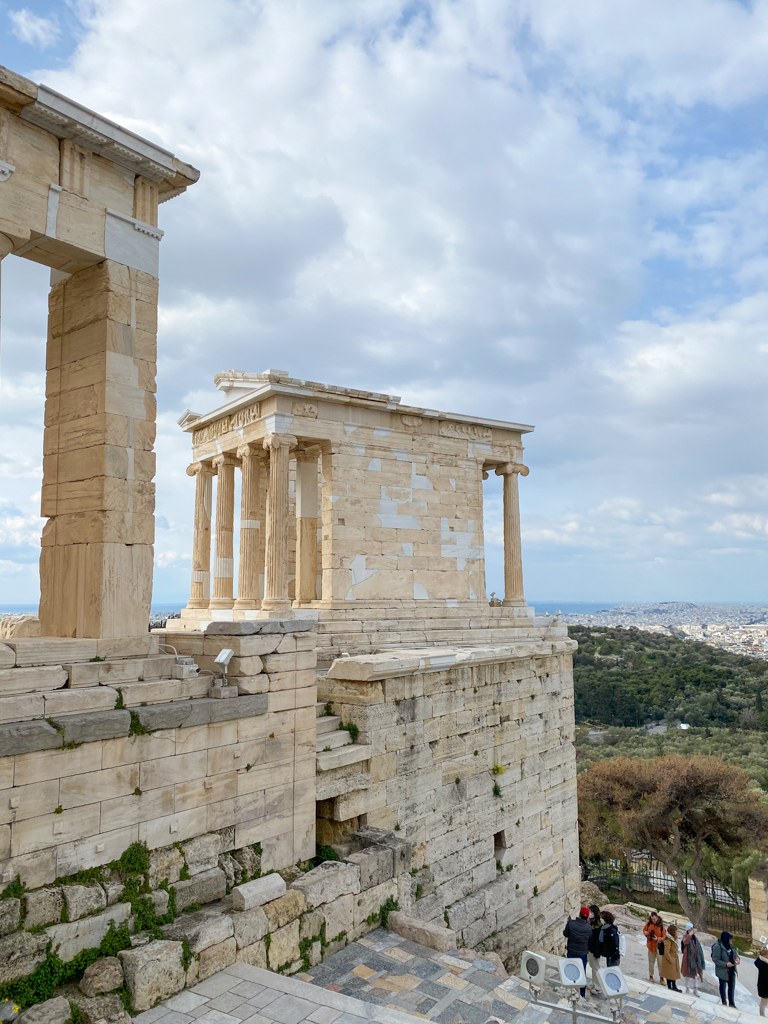
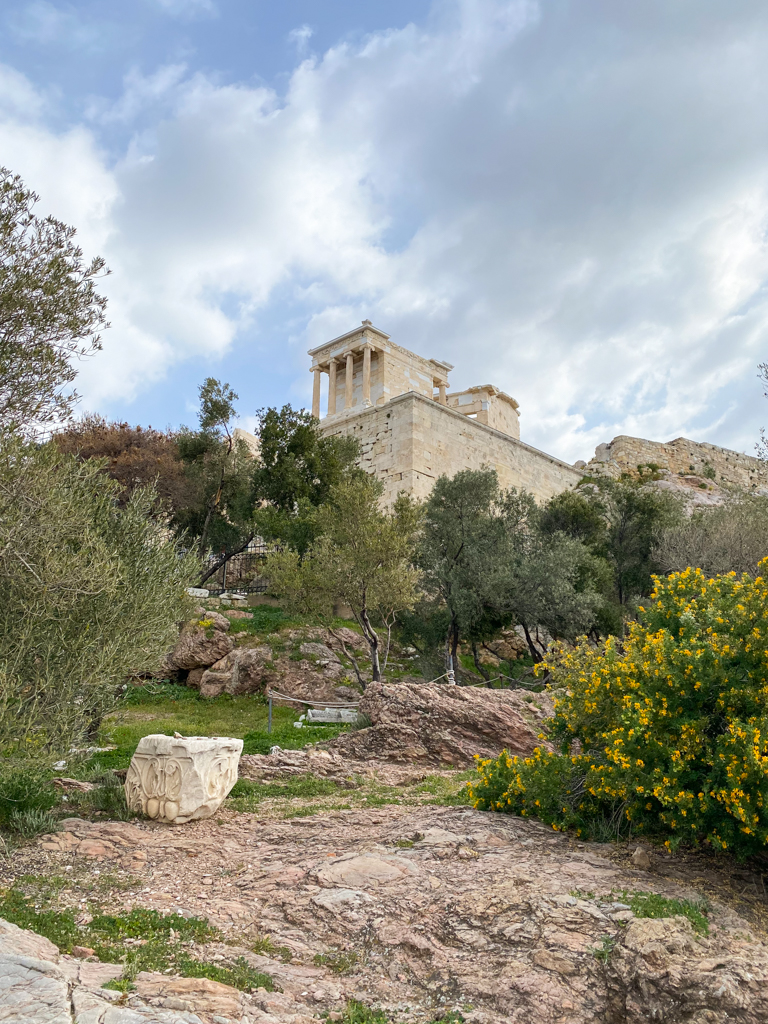
Of course, the star of the Acropolis is the Parthenon. This building is considered the epitome of the Doric order. Doric, as opposed to Ionic, is characterised by its very simple circular capitals at the top of columns. Beyond being a spectacular building, the Parthenon was built as a temple, dedicated to the goddess Athena. Over centuries it has served as a treasury, a Christian church and a mosque. The Parthenon is also the original home of some spectacular sculptures. You may have heard of this controversy, but from 1800 to 1803, the 7th Earl of Elgin removed some of the surviving sculptures, now known as the Elgin Marbles, reportedly with the permission of the Turks of the Ottoman Empire. You can view these at the British Museum in London, but you can’t help but wonder how wonderfully magnificent the Parthenon must have been in its heyday.
 The final large building on the Acropolis is the Erechtheion. It’s a hodge-podge of different rooms, architectural styles and purposes. The classical art historian Jeffrey Hurwit states, “The Erechtheion was a means to encompass, within its footprint, relics of early Athenian myth and religion.” In many ways, the story of the Erechtheion is the story of Athens. The mythical dispute between Athena and Poseidon over the patronage of the city of Athens is preserved in this very edifice. It contains the impression of Poseidon’s trident, visible through a hole left in the floor of the north porch. The legend continued with tales of Poseidon drawing up a sea during the contest, long believed to be under the building, and Athena sprouting the olive tree that marked her victory. The Erechtheion was also home to the olivewood statue of Athena Polias (Athena of the City), the Athenians’ most sacred relic, an object so ancient that not even they knew where it had come from.
The final large building on the Acropolis is the Erechtheion. It’s a hodge-podge of different rooms, architectural styles and purposes. The classical art historian Jeffrey Hurwit states, “The Erechtheion was a means to encompass, within its footprint, relics of early Athenian myth and religion.” In many ways, the story of the Erechtheion is the story of Athens. The mythical dispute between Athena and Poseidon over the patronage of the city of Athens is preserved in this very edifice. It contains the impression of Poseidon’s trident, visible through a hole left in the floor of the north porch. The legend continued with tales of Poseidon drawing up a sea during the contest, long believed to be under the building, and Athena sprouting the olive tree that marked her victory. The Erechtheion was also home to the olivewood statue of Athena Polias (Athena of the City), the Athenians’ most sacred relic, an object so ancient that not even they knew where it had come from.
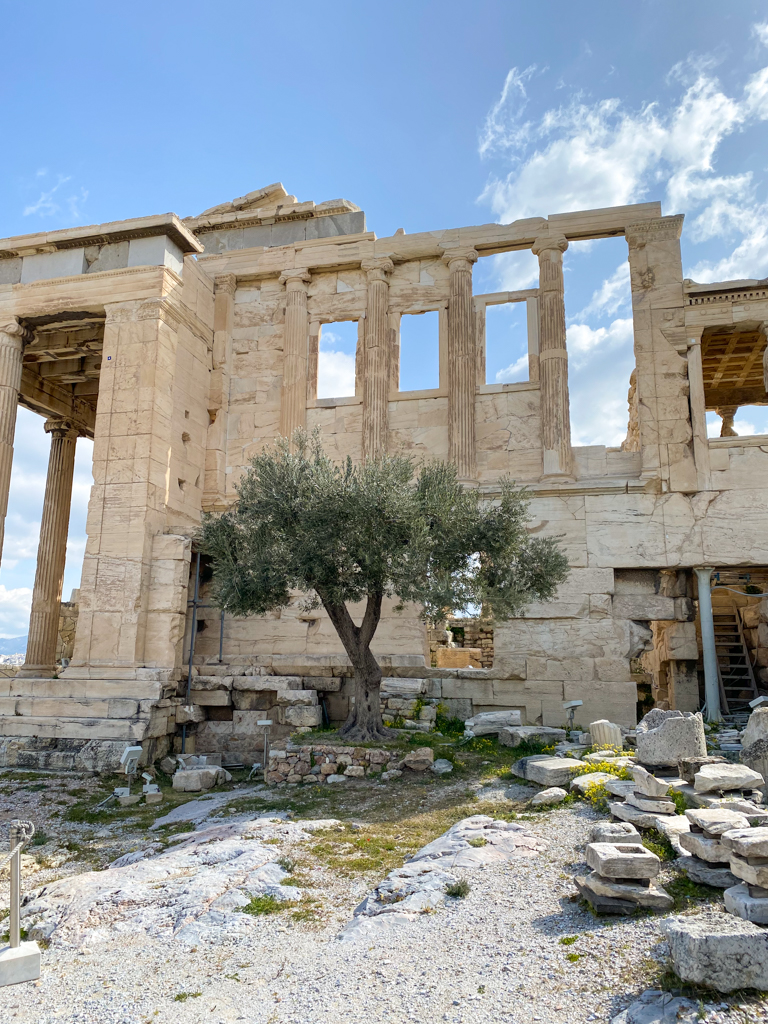

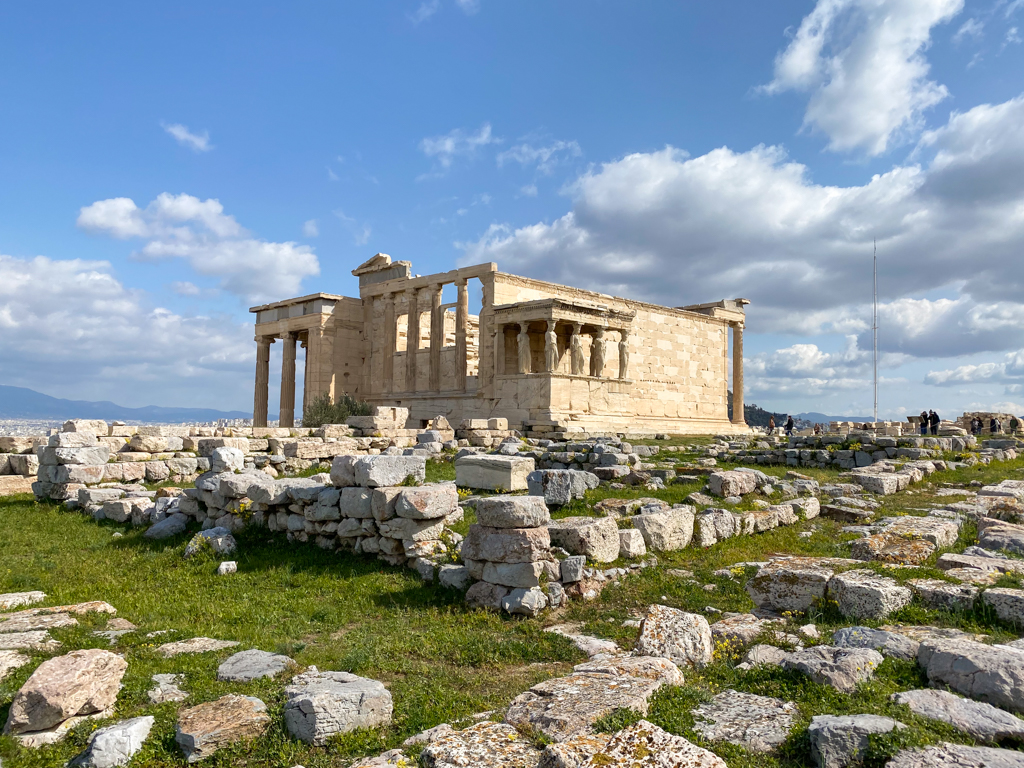
Snack Time
Greeks typically eat lunch around 2-3 pm, so we planned for a mid-morning snack at Fresko, a yoghurt bar just a couple minutes down from the Acropolis side entrance. We eat Greek yoghurt every day for breakfast at home, so I was really excited to try it in its country of origin! We went for the traditional option which is yoghurt with walnuts and honey. Needless to say, it was delicious. The sweetness of the honey complements the sourness of the Greek yoghurt and the walnuts give a nice crunchy texture and nutty flavour.
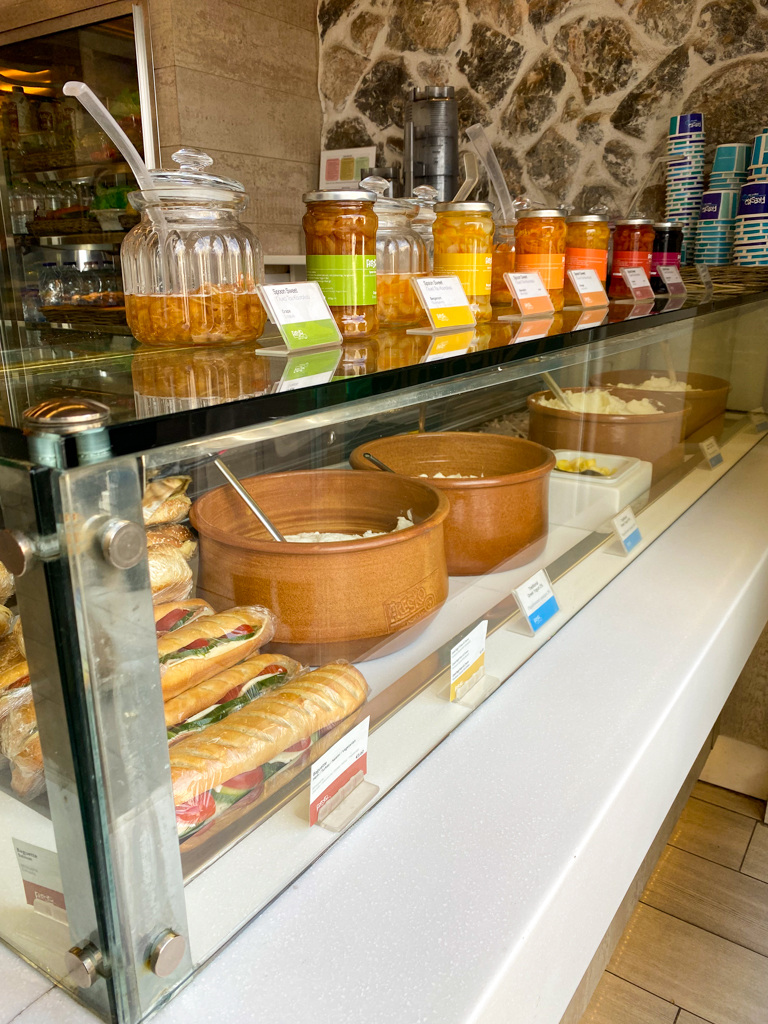

Before choosing, however, we were given a sample of the most popular option at the yoghurt bar, Greek yoghurt with sour cherries. The sour cherries are a type of glyko tou koutaliou, or “spoon sweet,” a type of fruit preserve that goes way back to ancient times. Spoon sweets are made by boiling the fruit, vegetable or flower in sugar syrup with a lemon rind and infusing the mixture with spices or herbs like cinnamon, clove, vanilla, marjoram or rose geranium. In several shops and restaurants, I saw various types of spoon sweets like lemon, bitter orange, and even pumpkin! Every restaurant we visited offered spoon sweets, always with the announcement that they were homemade in-house. I can definitely see that spoon sweets are very close to people’s hearts and grandmother’s homes, so each jar is filled with a lot of care, tradition and love.
Beyond the Acropolis
After our snack, it was time to see… some more ruins! We first walked through Hadrian’s Gate, a Roman triumphal arch.
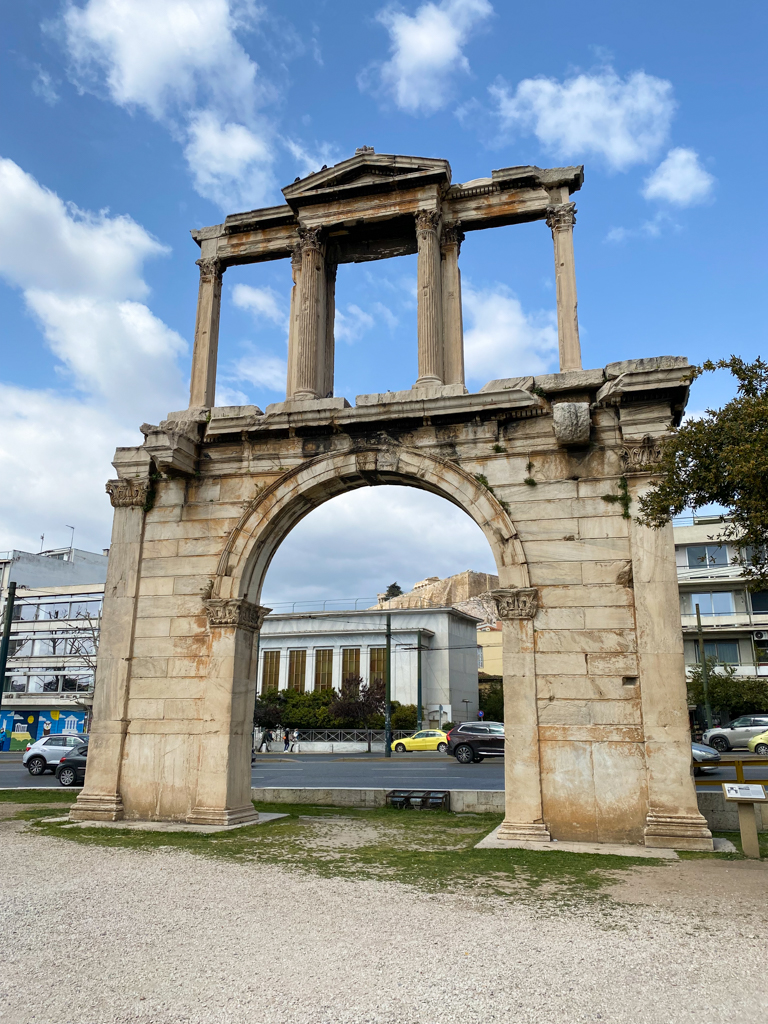 If you buy the multi-site ticket for the Acropolis you get access to several other interesting places across Athens. One such place is the Temple of Olympian Zeus. While there’s not a whole lot left, during the Roman period, the temple was renowned as the largest temple in Greece and housed one of the largest cult statues in the ancient world.
If you buy the multi-site ticket for the Acropolis you get access to several other interesting places across Athens. One such place is the Temple of Olympian Zeus. While there’s not a whole lot left, during the Roman period, the temple was renowned as the largest temple in Greece and housed one of the largest cult statues in the ancient world.

 From here we walked 10 minutes to the Panathenaic Stadium. The stadium was built on top of a racecourse that had been used since at least the 6th century BCE. In 330 BCE, the original stadium was built to host the Panathenaic Games, a religious and athletic festival celebrated every 4 years in honour of the goddess, Athena. In 144 AD, Herodes Atticus rebuilt the stadium in solid marble. At some point, it was eventually no longer used and abandoned.
From here we walked 10 minutes to the Panathenaic Stadium. The stadium was built on top of a racecourse that had been used since at least the 6th century BCE. In 330 BCE, the original stadium was built to host the Panathenaic Games, a religious and athletic festival celebrated every 4 years in honour of the goddess, Athena. In 144 AD, Herodes Atticus rebuilt the stadium in solid marble. At some point, it was eventually no longer used and abandoned.
The stadium was excavated in 1869 and, after being refurbished, it hosted the opening and closing ceremonies of the first modern Olympics in 1896. It’s pretty neat wandering around the marble steps and walking across the main stretch.

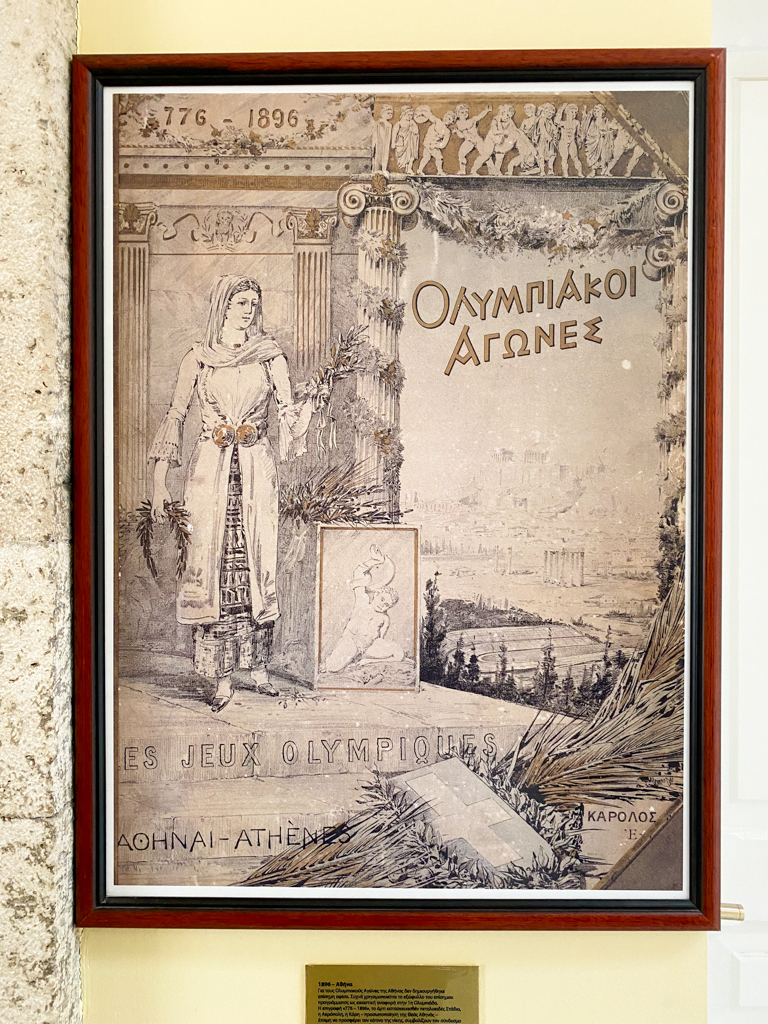

From the stadium, we leisurely walked through the National Garden and Syntagma Square. The former is a beautiful and wild public park, while the latter is the central square of Athens.


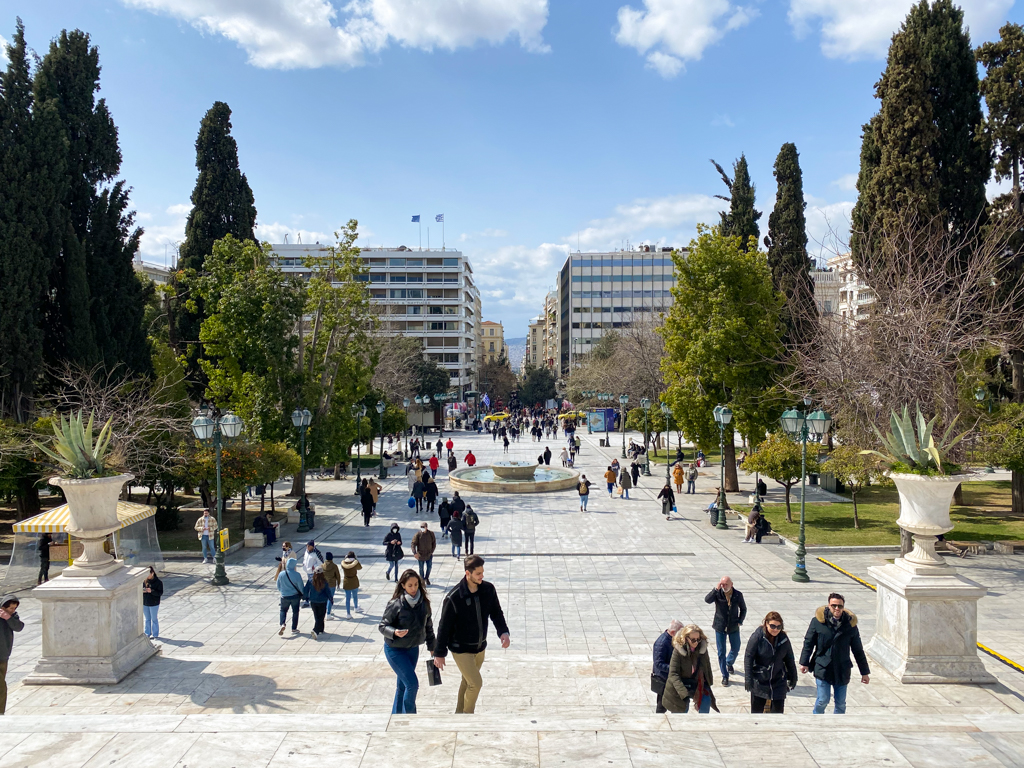
For lunch, we went to a traditional Greek place listed in the Michelin Guide, called Oikeio. It’s an adorably chic and kitschy sort of place with basic, but comforting food.


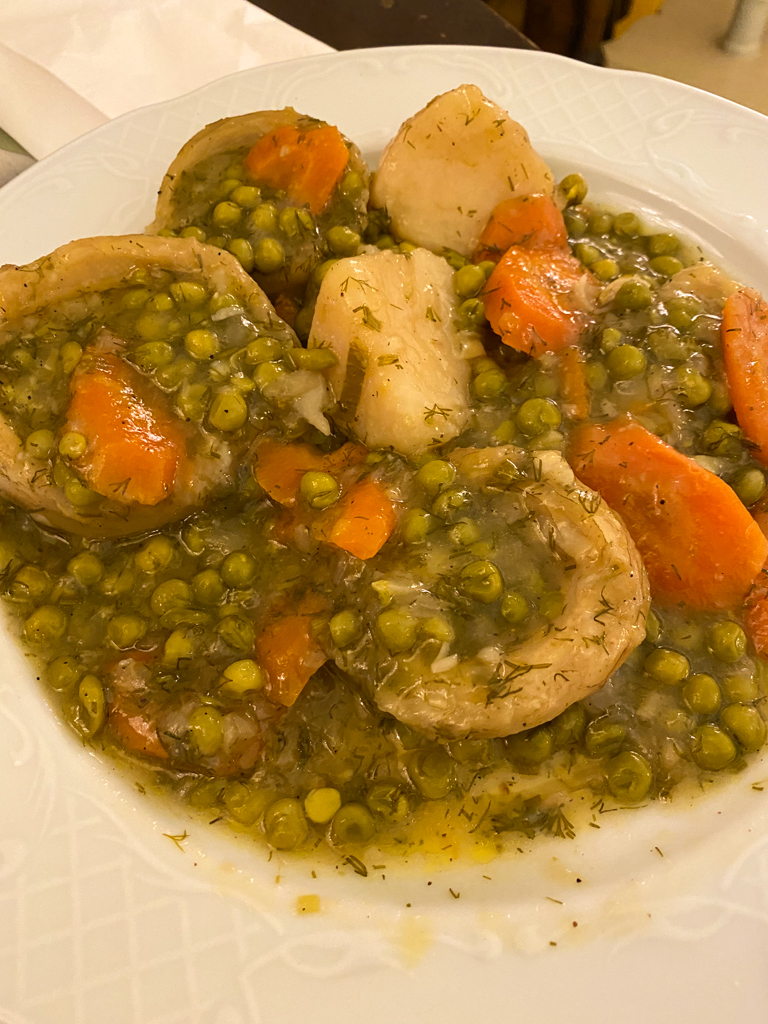
Our Hotel
By this time we were exhausted. We had slept very poorly so we decided to return to the hotel and rest. Due to the noise problem, we were upgraded to a nicer room on the fourth floor. It was a great room and we are really thankful to the hotel for this nice gesture. It turned our trip around, and we thoroughly enjoyed our resting time here.
We stayed at NLH MONASTIRAKI, located in the neighbourhood of Monastiraki. NLH stands for Neighbourhood Lifestyle Hotels and they have a few across the city. They tend to be smaller hotels in great locations. We really liked ours, had everything you needed and more, but just make sure you get yourself a room, not on the first floor!
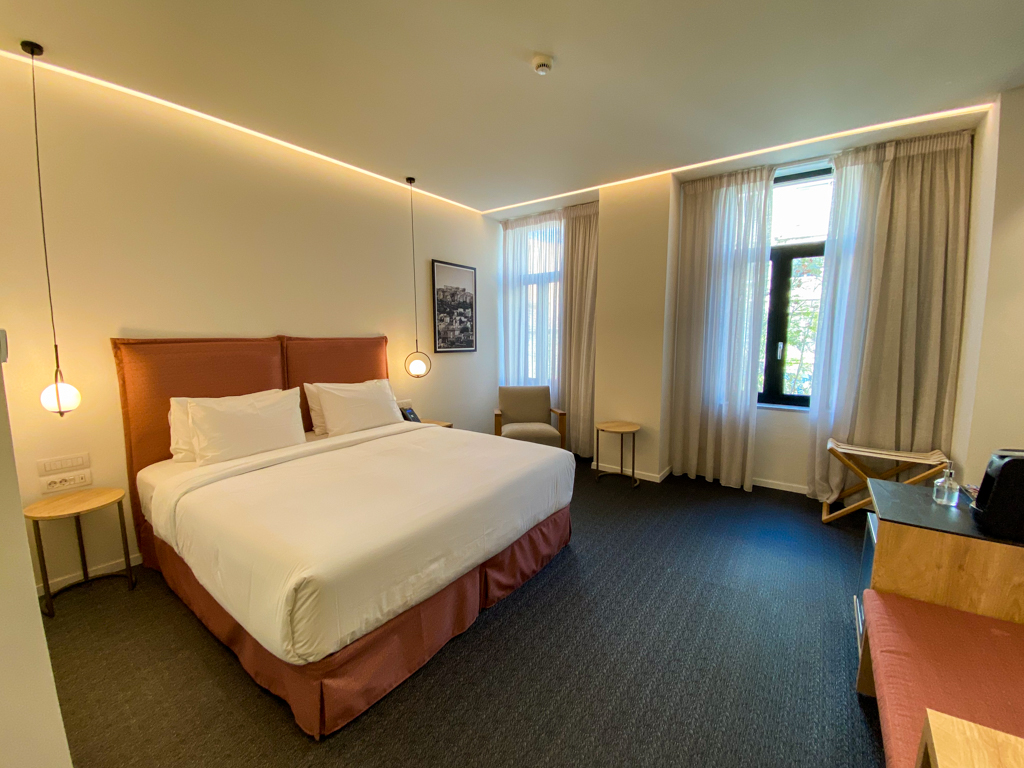
 We had planned to only rest for an hour or so but we were still so tired that we elected to rest more in preparation for our night out.
We had planned to only rest for an hour or so but we were still so tired that we elected to rest more in preparation for our night out.
Exploring Exarchia
Around 8 pm we headed out to the neighbourhood of Exarchia. It’s the alternative hub of Athens, with a reputation for being an anarchist and youth culture hotspot. I really enjoyed the neighbourhood, it’s definitely my kind of place. It’s home to several rock and jazz clubs, as well as thought-provoking street art.
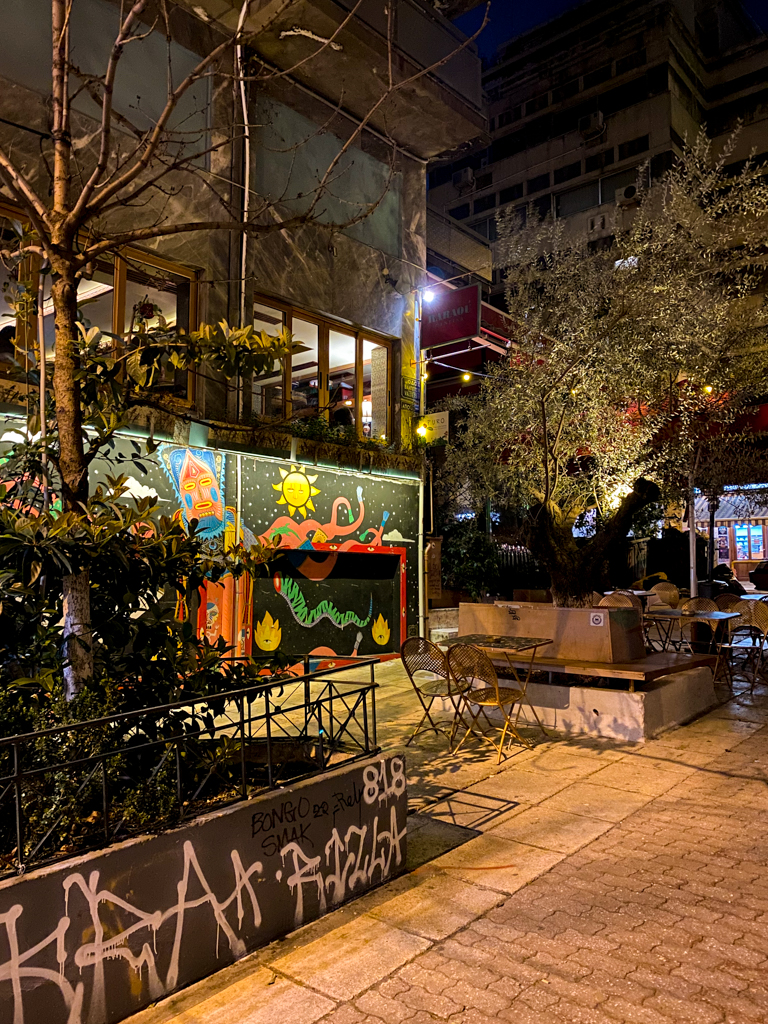
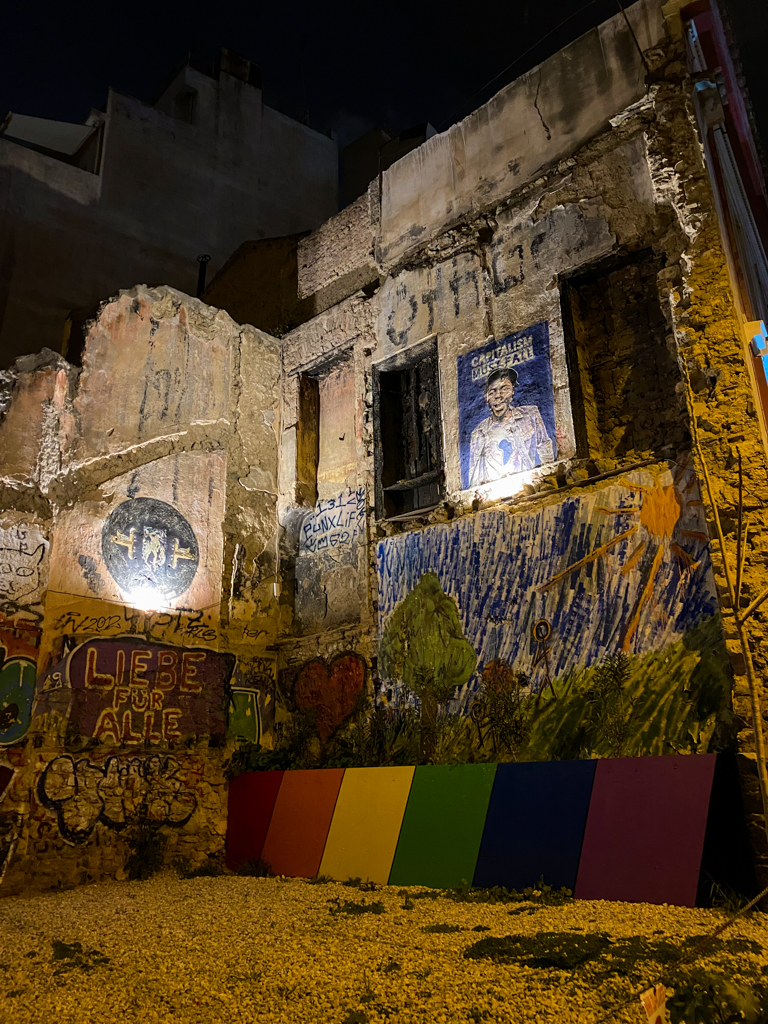
The whole evening centred around the true highlight of the day: a live performance of rebetiko. Rebetiko is a type of urban music popular in Greece, initially spread among the urban lower and working-class populations in the early twentieth century. Live performances often occur in bars or venues. I did a lot of research on the best places to see rebetiko performed and oftentimes I was led to Exarchia. I picked a bar called Ο Άγγελος as my venue of choice. It was a wonderful experience, but for any of you that want to follow suit please be aware that rebetiko bars often don’t even open until 10-11 pm!
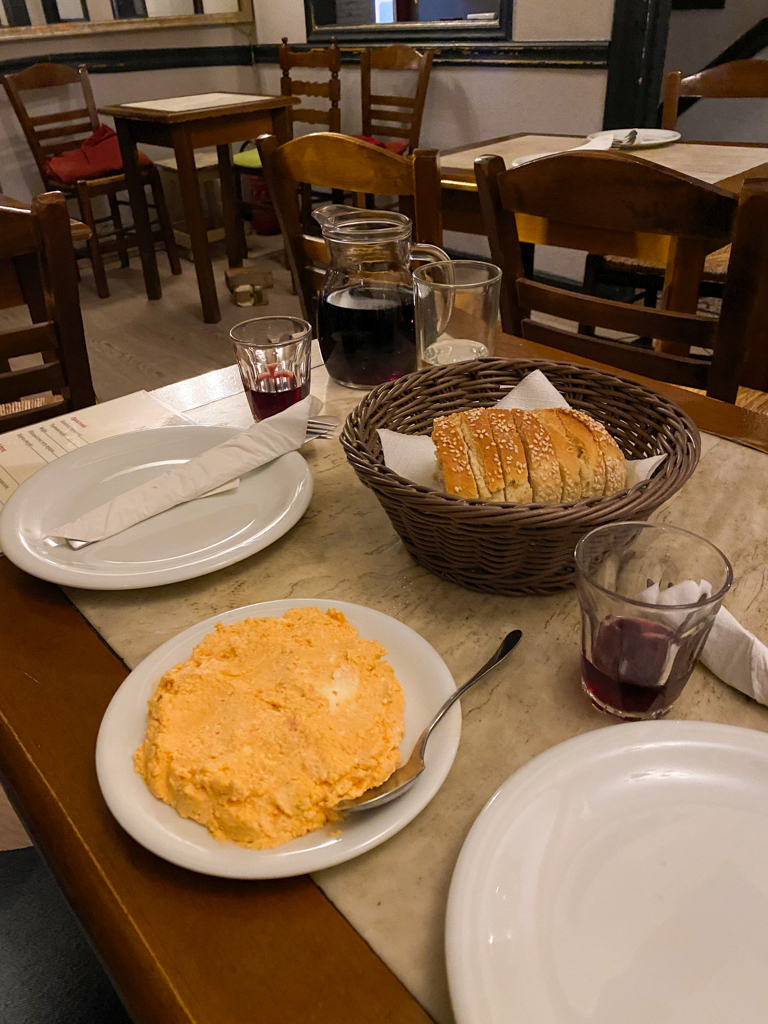
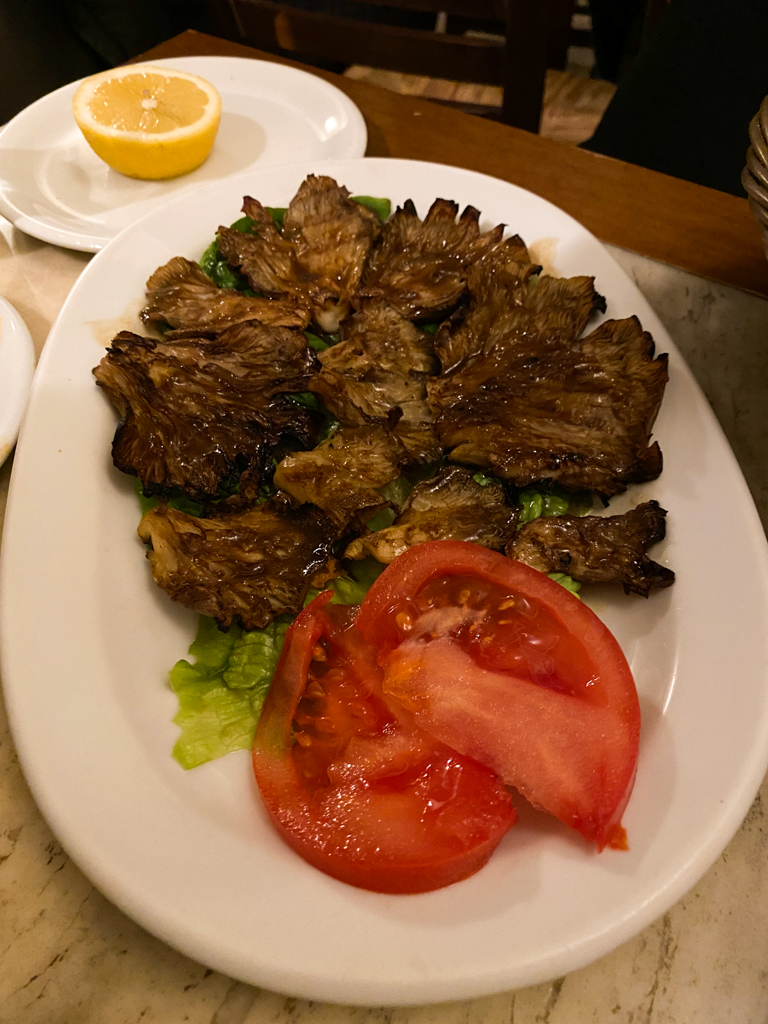
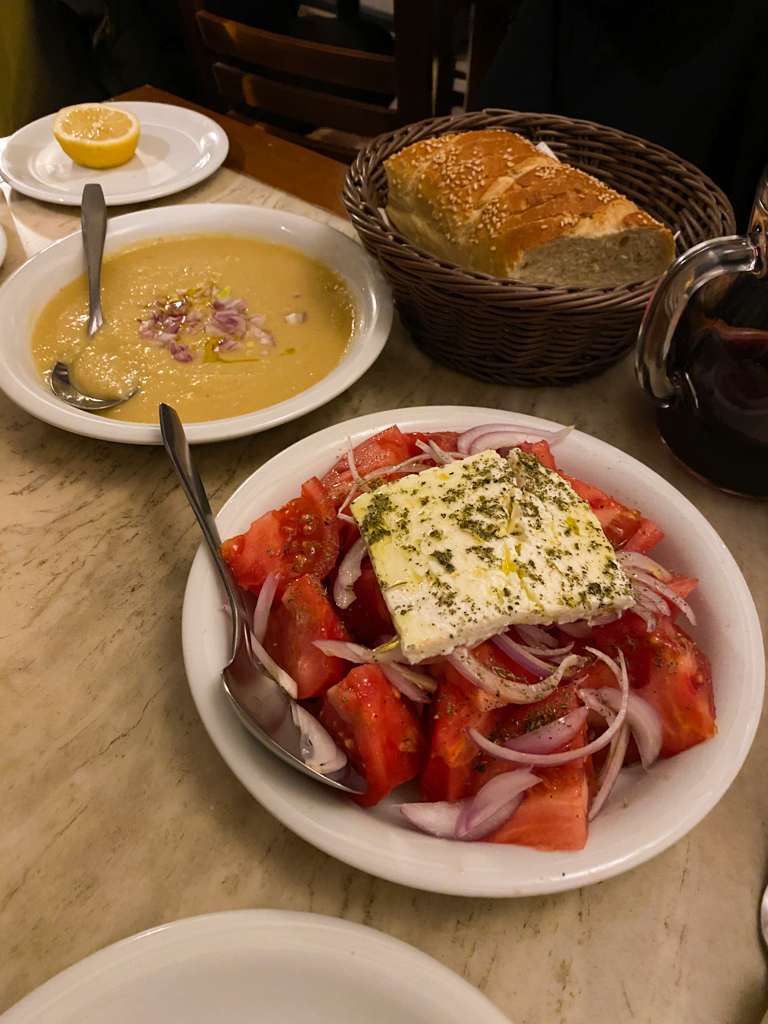
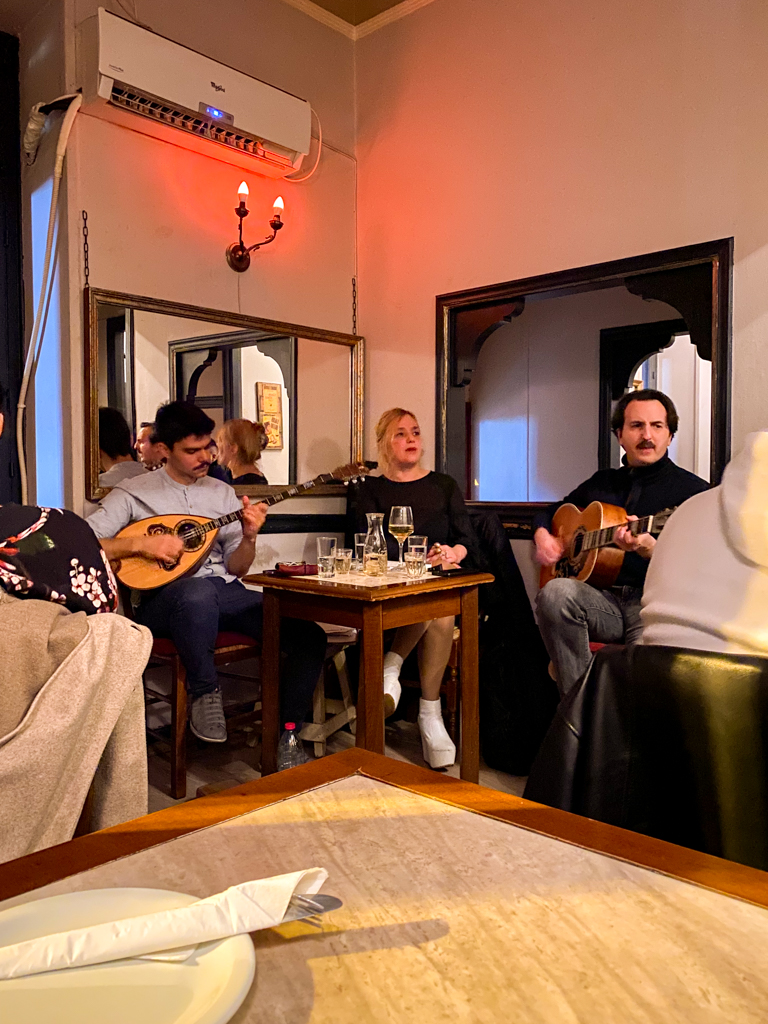
After a lovely evening listening to wonderful music, it was time to head back to our hotel and recover some more. It was a spectacular day.
Have you been to Athens? Stay tuned for Part II!

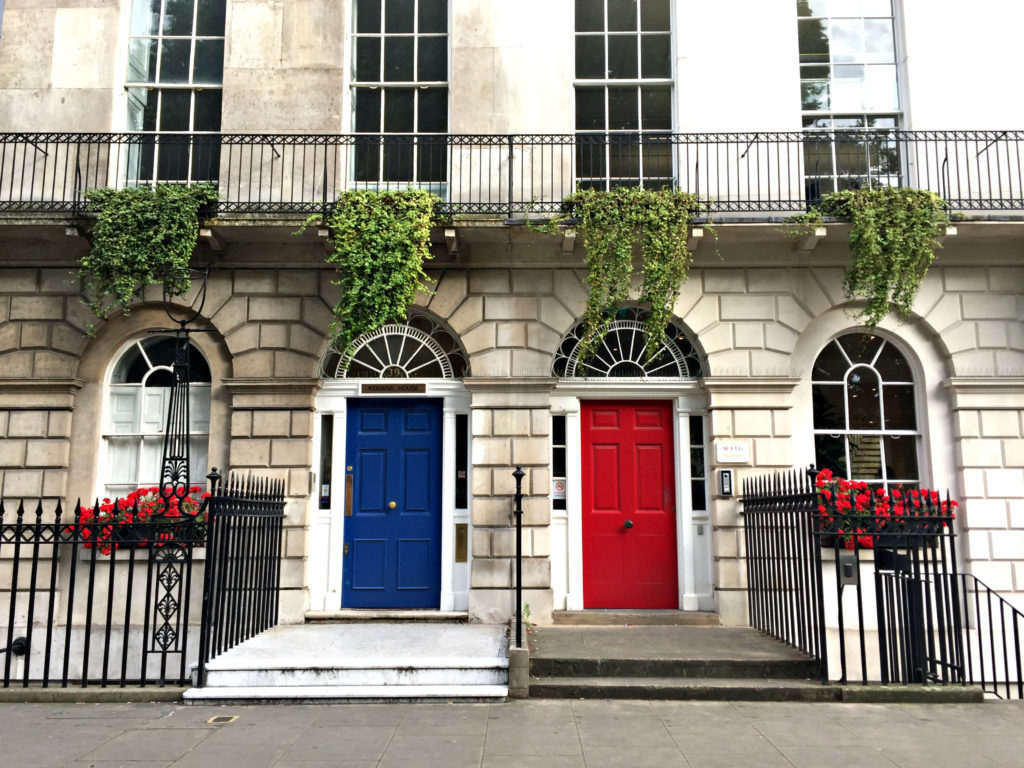
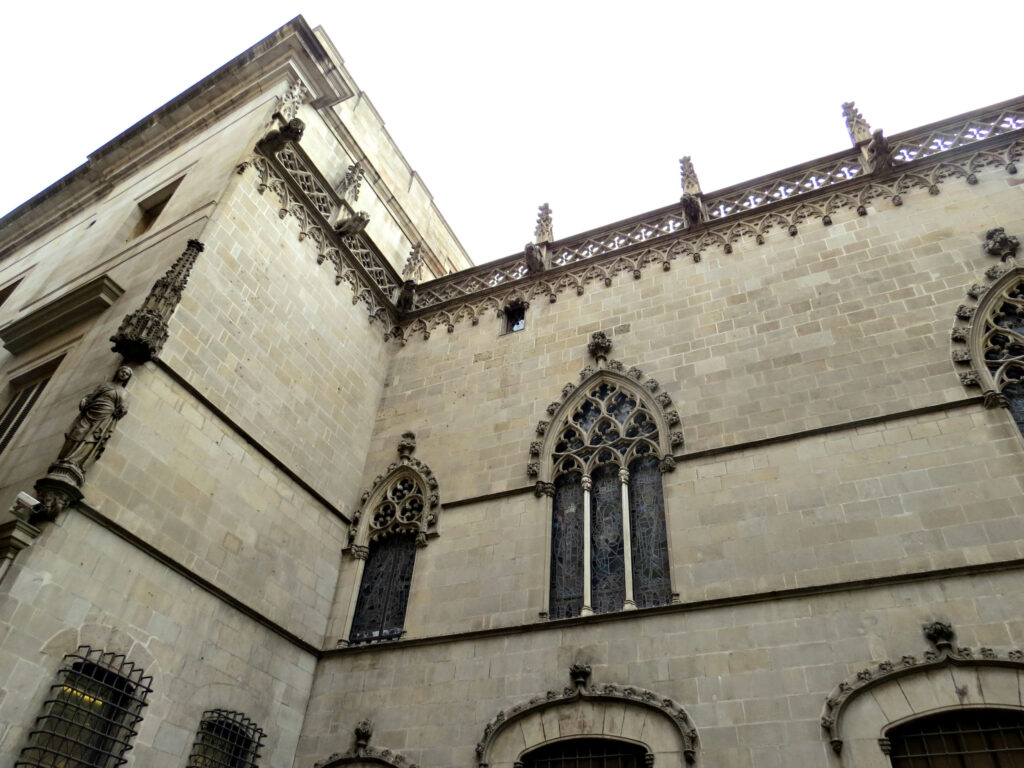
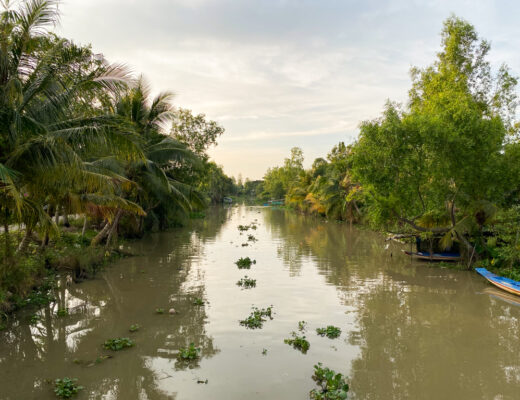
No Comments